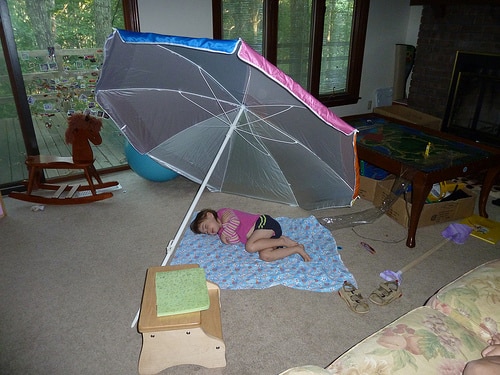It’s All About Location: Food Allergies More Common In City Kids Than Rural Ones
 When I bought my son his very first pencil case at age 5 a little plastic one with a cool comic-strip print he thought it was an EpiPen case. “But I’m not allergic to anything,” he told me and handed it back. He’s so used to seeing those EpiPen cases on classmates, I guess it’s the first thing that springs to mind when presented with any type of small, zip-up pouch. This story represents just how common child food allergies have become, though there’s still very little known about what exactly causes them.
When I bought my son his very first pencil case at age 5 a little plastic one with a cool comic-strip print he thought it was an EpiPen case. “But I’m not allergic to anything,” he told me and handed it back. He’s so used to seeing those EpiPen cases on classmates, I guess it’s the first thing that springs to mind when presented with any type of small, zip-up pouch. This story represents just how common child food allergies have become, though there’s still very little known about what exactly causes them.
But a new study finds food allergies are more common among kids living in cities than those in more rural areas. Previous studies have revealed that urbanites have higher rates of other types of allergies, such as asthma and hay fever, but this is the first to look at the growing rate of child food allergies based on geography.
Researchers at the Northwestern University Feinberg School of Medicine surveyed more than 38,000 parents who had at least one child under age 18. They asked whether their child suffered from a food allergy and, if so, when it was diagnosed and how severe. Food allergies were then mapped by ZIP code in every state.
They found that children with any type of food allergy was 9.8% in cities, 7.2% in suburban areas and 6.2% in rural areas. “That’s a big discrepancy,” said Dr. Ruchi Gupta, an assistant professor of pediatrics at Northwestern. “What we’ve found for the first time is that population density and environment have an impact.”
When it comes to individual foods and allergies, researchers discovered that peanut allergies are twice as common in urban centers as rural communities, while shellfish allergies are also way more prevalent in urban areas.(The states with the highest rates of food allergies in children were Nevada, Florida, Georgia, Alaska, New Jersey, Delaware and Maryland.)
Of course, we’re all dying to know what the environment triggers are. According to Gupta, one theory is that Americans have become too hygienic (think hand sanitizers, anti-bacterial gels, etc), causing the body to “fight things it shouldn’t be fighting.” Another theory is that pollutants in cities trigger allergies.
(Photo: BlueOrange Studio/Shutterstock)





